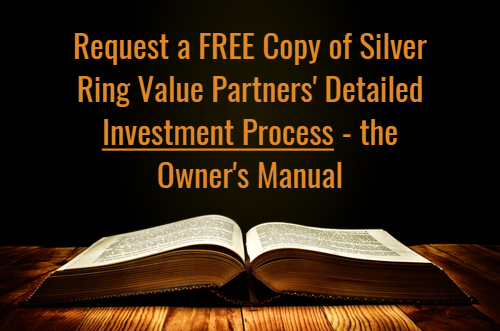Balancing Conviction and Flexibility in Investing
/Conviction is a necessary quality for any investor – lack thereof can lead to an inability to stay the course on a successful contrarian investment. Yet without flexibility investors can easily fall prey to various behavioral biases such as anchoring and overconfidence and fail to correctly change their minds when the evidence merits doing so. The ability to properly navigate the tension between conviction and flexibility is one of the distinguishing traits of superb investors. This article explores the question of when we should stick with our convictions and when we should be flexible and change our minds.
When to stick with one’s conviction in investing
1. When you have developed a well thought-out investment philosophy and process over time. Even the best processes are going to generate a substantial number of poor outcomes, so the mere appearance of some of those bad outcomes should not in and of itself cause you to drastically change your approach. It would be a big mistake to let a few individual failed applications of the process to cause you to lose faith in a framework developed over years of thought and empirical observation.
2. When the original logic that led to your initial conclusion is still valid when taking into account all of the new evidence. For value investors this can frequently be accompanied by a period of time when the majority of market participants disagree with their conclusions. After all, that divergent view about the investment’s prospects is what led to the opportunity in the first place. Therefore it is important to not let a prolonged period of time during which the market refuses to come around to your point of view to cause you to lose your conviction in your analysis. As Warren Buffett put it, “You’re neither right nor wrong because other people agree with you. You’re right because your facts are right and your reasoning is right – and that’s the only thing that makes you right.”
3. When there is new evidence that makes your original conclusion more likely. This can make it the correct decision to add to an investment that has done well (not a typical value-investor action) if either the likelihood of being correct is now higher or if the value estimate needs to be updated upwards due to new information.
When to be flexible and consider changing your opinion
1. When sufficient counter-thesis evidence presents itself. The amount of evidence required to change your mind should vary based on the situation, but it is always important to update your view based on new incremental information. Stubbornly clinging to your original investment thesis when there is significant information that should cause you to doubt your conclusion isn’t being a contrarian – it’s just being unreasonably stubborn. There are many behavioral biases that can cause you to behave in just such a manner – a topic that I previously addressed in Behavioral Defense in Decision Making. One way to be vigilant is to keep a log of whether each new piece of information is consistent or inconsistent with the original thesis.
2. It is important to re-examine your original logic at certain intervals, even in the absence of contrary evidence. Sometimes the facts haven’t changed for the worse, but we just made a mistake in our original conclusion based on those facts. One way to improve your odds of doing this successfully is to have another knowledgeable person present a “devil’s advocate view” – a strongly argued investment thesis for the opposite conclusion than the one that you had reached.
3. Don’t anchor on the investment’s prior price. One particularly difficult situation to be flexible in investing is when an investment that you had passed on has appreciated in price, but it might still be the right decision to make that investment. Peter Lynch once told a story of a stock that he had considered at $10 per share and that he thought was worth $20+. While he was doing the analysis, the shares had appreciated to $12. He passed on buying the stock, having anchored on the initial price of $10 and waited for the shares to come back down, which they never did.
4. Assume you have made some mistakes and aggressively search for them. A successful value investor is likely to be wrong 4 times out of 10; a concentrated investor who holds 10 to 20 investments is likely to have 4 to 8 of those ‘future mistakes’ currently in the portfolio. It’s important to take an aggressive mindset and actively search for which of the current holdings are likely to be mistakes rather than succumb to the mind’s desire to defend the original conclusions.
Conclusion
Knowing how to balance conviction and flexibility in investing can make the difference between a good and a great investor. You should stick to your conviction if your analysis is still correct and the facts are still consistent with your conclusion even if others disagree with you. You should also be hesitant to drastically change your overall investment process because of any short-term reason. On the other hand, you need to be flexible enough to look for contrary evidence and update your thesis when such information presents itself. Finally, by taking the mental posture that you are certain to be wrong some of the time, you can lessen the mind’s defense mechanisms and allow yourself to aggressively hunt for your own mistakes before they make an even bigger negative impact on your portfolio.
If you are interested in learning more about the investment process at Silver Ring Value Partners, you can request an Owner’s Manual here.




